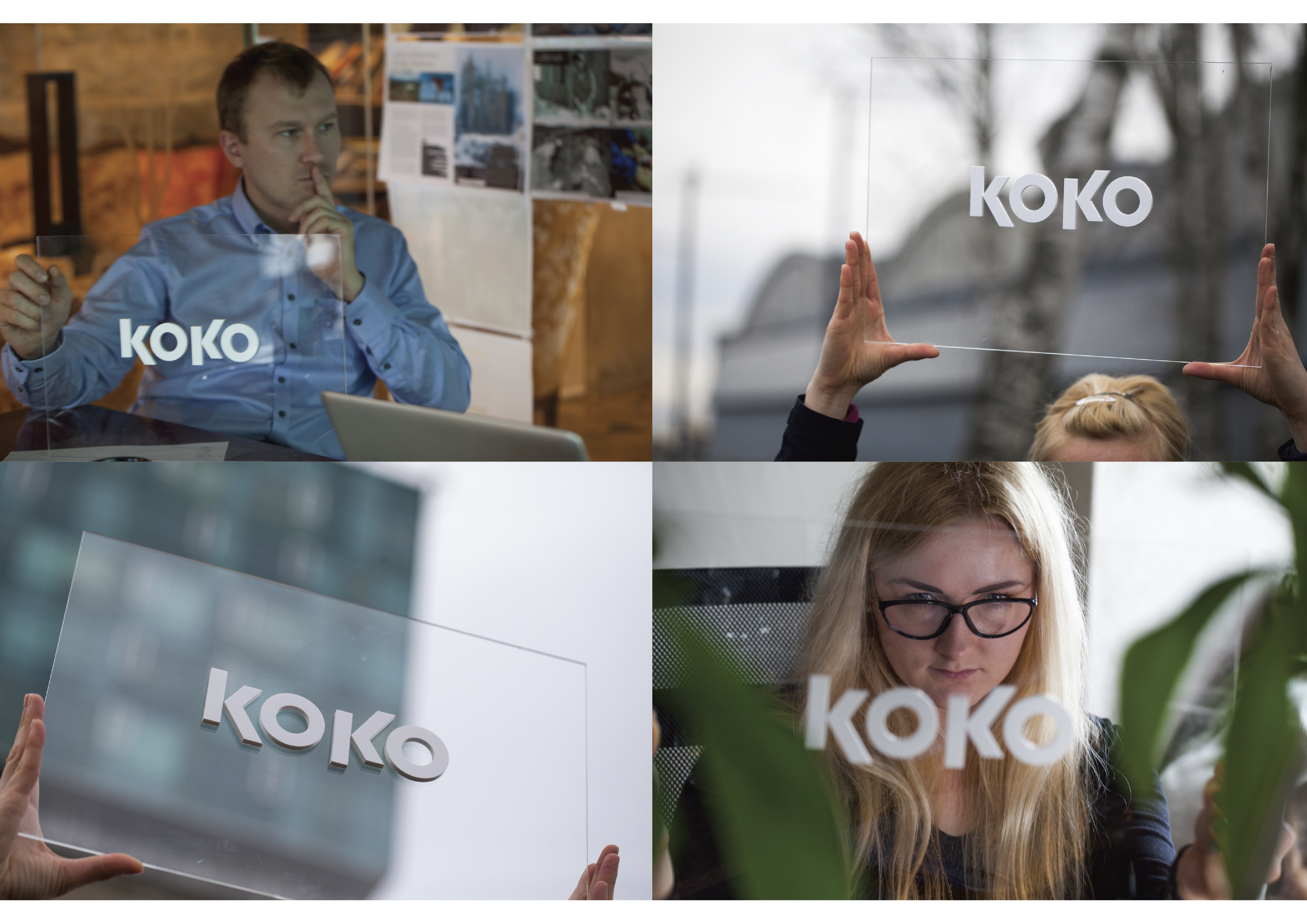Kirjeldus
KOKO Architects was founded in 2000. Among other projects it has designed Estonian pavilion at EXPO2000 in Hannover, the three-towered former carpenter’s workshop in Rotermann Quarter, Tallinn Synagogue and the reconstruction of Tallinn TV Tower and the Seaplane Harbour. In 2013 KOKO Architects won the European Union Prize for Cultural Heritage / Europa Nostra Grand Prix for the Seaplane Harbour Hangars. In recent years KOKO Architects has stepped into the international market and is now working on projects in several countries. Up to now the company’s graphic design has been an angular 1990s Internet pixel graphics inspired font that is not well readable. The meaning of the cellular pattern sign accompanying the logo is too complicated. Entering new markets and new cultural environments far away from the familiar context where the office is known made it necessary to create a new logo. The complexity of the existing logo was becoming an obstacle. The purpose of the new logo is to increase readability and to make it more dynamic. The new logo is not accompanied by a separate sign instead the font itself works as one. The logo is a bold combination of two simple components: letters K and O that are in slight shift when in repetition. Repetition of the same elements creates patterns and other graphic elements that are linked to signature graphics.
KOKO arhitektid on aastal 2000 loodud arhitektuuribüroo, mis on projekteerinud muu hulgas Eesti paviljoni EXPO2000 Hannoveris, kolme torniga endise laudsepatöökoja Rotermanni kvartalis, Tallinna sünagoogi, Teletorni rekonstruktsiooni ning Lennusadama. Aastal 2013 anti KOKO arhitektidele Euroopa Liidu ja Euroopa Nostra kultuuripärandi Grand Prix Lennusadama taastamise eest. KOKO arhitektid on viimastel aastatel jõudnud püsivalt rahvusvahelise tegutsemise faasi ning osutab projekteerimise teenuseid mitmes riigis. KOKO senine firmagraafika on nurgeline 1990ndate interneti pikselgraafikast ajendatud kiri, mille loetavus ei ole lihtne. Logoga kaasnenud rakumustrit kujutav märk kannab liialt keerulist sõnumit. Uue märgi loomist ajendas minek võõrastesse riikidesse ja kodusest erinevasse kultuurikeskkonda, kuhu ei tule senine kontekst ja tuntus kaasa. Senise märgi keerukus muutus takistavaks. Uue märgi eesmärk on suurendada loetavust ja tuua märki dünaamikat. Uue logoga ei kaasne eraldi märgilist kujundit, seega kannab font seda ise. Märk on julgelt lihtne kahe komponendi kooslus: K ja O täht, mis korduses on kerges nihkes. Samade elementide kordusest tekivad tunnusgraafikaga seotud mustrid ja muud graafikaelemendid.
-
producer
-
projektijuht



